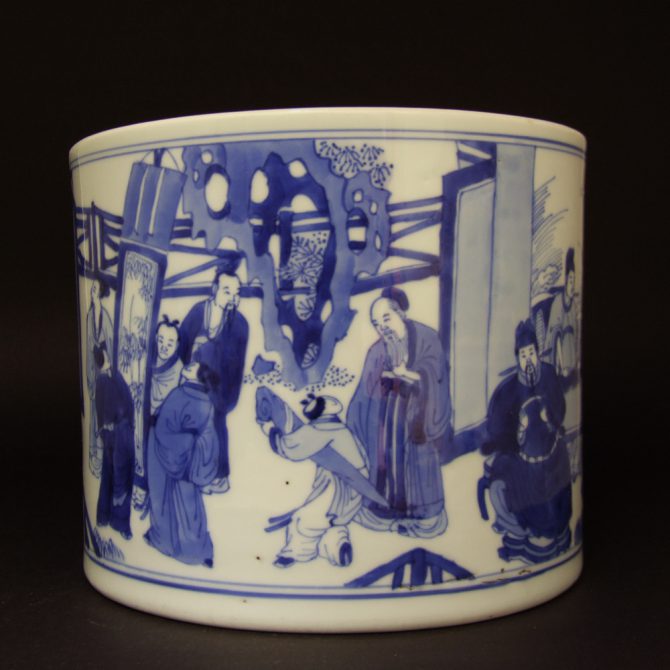
KANGXI 1662 – 1722. Chinese Taste Porcelain
A Fine Kangxi Blue and White Porcelain Bitong, Brushpot. Well Painted Using Vibrant Cobalt Blue of Varying Tones with the `Four Accomplishments`. The Literati are Shown Playing the Qin, Playing Weiqi, Painting and Writing (Calligraphy). The Base with a Small Glazed Recess Area with a Leaf Mark Surrounded by an Unglazed Ring.
SOLD
- Condition
- Very good, a shallow rim chip 8 x 5mm (approximately 1mm deep) a few small glaze chips 3mm or less, fritting to the rim.
- Size
- Diameter : 18.2 cm (7 1/4 inches). Height : 15.2 cm (6 inches).
- Provenance
- From a German Private Collection.
- Stock number
- 21350
- References
- For a similar Kangxi Blue and White Porcelain brushpot see : Seventeenth Century Jingdezhen Porcelain from the Shanghai Museum and the Butler Collection (Shanghi Museum,2006. ISBN 1-85759-417-7) page 280 plate 102. For a Kangxi blue and white brushpot with this subject see : Fine Chinese Ceramics and Works of Art, 3rd November 2009. Lot 295. Sold £55,000.
Information
Bitong, brushpots are not found in 17th or early 18th century European inventories unlike some other ceramic forms which fore fill a specific Chinese function. Blanc de chine `libation cups`, were for example, were made for drinking wine in China but they were imported in large numbers into the West. There curious forms appealed to Western tastes and were used in European displays or converted with the addition of a gilt bronze handle to become a bonbon dishes. Brushpots on the other hand seem to have been made exclusively for the Chinese domestic market, more specifically for the scholar literati class.
Bitong are an essential part of literati`s desk, what is often referred to as a scholars desk. Other scholarly items for the desk might include a brush-rest, inkstone (for grinding the dry ink) a water pot for the water to add to the inkstone, a brushwasher as well as a table screen. As with the present brushpot the subject matter reflected scholarly theme